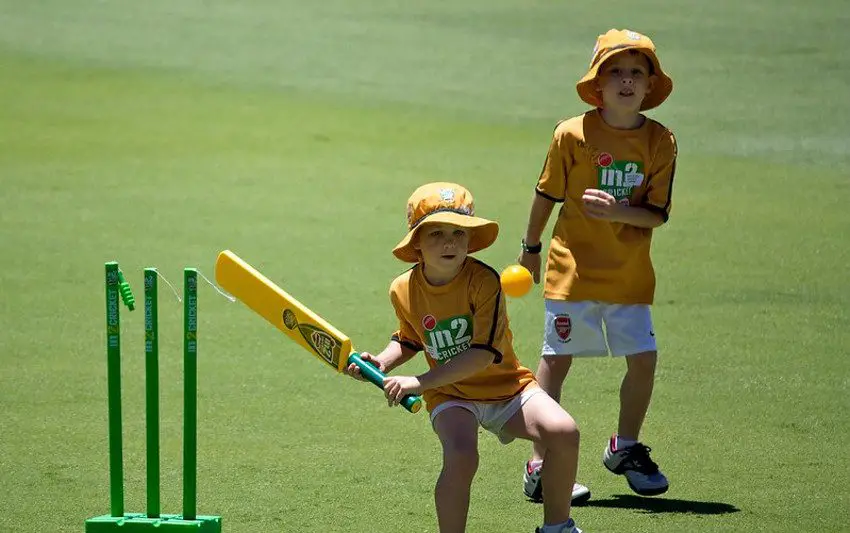Table of Contents
Cricket has always been a game of courage, endurance, and resilience. Yet, some of the sport’s greatest battles have taken place far away from the pitch. For a few cricketers, the toughest opponent wasn’t a fast bowler or a tricky spinner; it was cancer. These players faced one of life’s most demanding tests with the same determination they once showed on the field.
Their journeys remind us that strength isn’t just about athletic power; it’s about the will to fight through pain, uncertainty, and fear. Each story is different. Some returned to the game, others devoted their lives to raising awareness, but all share a common spirit of defiance.
From Yuvraj Singh’s comeback to Sir Geoffrey Boycott’s endurance, these cricketers proved that real champions don’t give up when the game gets tough. This article looks at the inspiring stories of those who turned their fight against cancer into a testament of hope, courage, and human resilience.

Yuvraj Singh
Yuvraj Singh’s story is one of resilience. He had a stellar performance for Team India in the 2011 World Cup. He amassed 362 runs, took 15 wickets, and got the Player of the Tournament award. However, he faced a serious health challenge soon after helping India win the World Cup.
He was diagnosed in early 2012 with a rare mediastinal seminoma, a tumor between his lungs. As noted in an NCBI study, mediastinal seminoma is very rare. It generally affects young and middle-aged men. It is diagnosed by histopathological examination, and surgery and chemoradiotherapy are available treatments.
Youvraj Singh traveled to the US for chemotherapy, and the road to return was steep. He spoke openly about how the experience changed him, and upon regaining his fitness.
He also pledged to help others with cancer through his foundation, YouWeCan. As noted on their official website, the foundation offers financial aid in multiple ways. For instance, there’s the YouWeCan Cancer Treatment Fund with a maximum limit of ₹2 lakhs per person. Besides that, patients can seek aid through the Indian Cancer Society (ICS), CanKids, Cancer Patients Aid Association (CPAA), and more.
Heath Streak
Heath Streak, one of Zimbabwe’s great cricketers and former captains, battled colon and liver cancer before his death at age 49. Beyond the personal tragedy, his story reminds us of life’s fragility. It is true even for athletes who seem invincible on the field. His passing brought out heartfelt tributes from around the cricket world.

Even without death, cancer can have a disastrous effect on the quality of life of patients. Treatment itself can cause problems if not delivered appropriately and with the right devices. Consider the example of Bard PowerPort. According to TorHoerman Law, it is widely used in chemotherapy. The PowerPort provides quick intravenous access, which is required for delivering treatment drugs.
However, some patients have reported that the Bard PowerPort is defective. It is prone to breakage during removal, causing infections, migration, blood clots, etc. Many patients have even filed a Bard PowerPort lawsuit against the manufacturer.
Such instances show that death from cancer can occur due to external complications that might have nothing to do with cancer. But for Heath Streak, it was cancer that took his life.
Sir Geoffrey Boycott
Sir Geoffrey Boycott, a legendary England batsman, has twice faced throat cancer. His first diagnosis was in 2002; in mid-2024, he announced that the disease had returned and he was scheduled for surgery.
According to The Guardian, the former England cricket star successfully underwent a three-hour operation to remove a tumor from his throat. His daughter Emma announced that the surgery went well and that his surgeon gave a positive update. The 83-year-old had revealed his diagnosis earlier in July 2024 following scans and biopsies.

His calm, matter-of-fact approach to announcing his health challenge showed his focus, not only on treatment but on moving through it. The cricket community rallied round with support, reflecting respect for his long career and now his fight. He reminds us that even the strongest sports veterans must sometimes turn their focus to health.
Michael Clarke
Michael Clarke, the former Australian captain and World Cup winner, has had a long fight with skin cancer. He was first diagnosed in 2006 and, since then, has undergone multiple surgeries to remove skin cancer lesions.
He faced one of the most common types of cancers worldwide. As mentioned in a ScienceDirect study, it is most common among fair-skinned populations. They are prone to sunburn, with basal cell carcinoma being the most widespread type. Australia and New Zealand report the highest overall incidence of skin cancers, while Europe records the highest rates of both incidence and mortality.
Clarke has used his platform to raise awareness about sun exposure, especially given Australia’s high UV radiation environment. His message is about regular check-ups. His willingness to be public about his condition helps highlight how athletes also face serious health risks beyond injuries.
Recently, Clarke was diagnosed again with skin cancer, this time on his nose. According to Onmanorama, the Australian cricket legend took to Instagram to update fans about the same. He wrote that skin cancer is real, thanked his doctors, shared the update, and spread awareness through the post’s caption.
Sam Billings
English wicket-keeper and batter Sam Billings has shared his personal fight with skin cancer, using it as a warning to fellow cricketers and fans. As a BBC article states, he underwent two operations in 2022. He was diagnosed after a routine screening at Kent County Cricket Club, which revealed a mole on his chest. The mole turned out to be a malignant melanoma about 0.6 mm deep.
Billings said that if he had delayed the check for a meeting instead of attending the screening, the outcome could have been much worse. He described the recovery as “mentally more challenging than physically,” and reflected that the experience shifted his perspective. Billings now advocates strongly for sun safety in the sport.

He states that even in England, where conditions may seem mild, UV exposure still poses danger. He backed a campaign in partnership with the Professional Cricketers’ Association and other skin–protection initiatives. The English cricketer urged players and fans to be more diligent about checking moles, using sunscreen, and treating sun-cream application seriously.
Frequently Asked Questions
What type of cancer did Yuvraj Singh have, and how common is it?
Yuvraj Singh was diagnosed with a rare type of germ-cell tumor called mediastinal seminoma, located between his lungs. It’s uncommon compared to other cancers and usually affects young men. Because of its location, early symptoms like coughing, fatigue, or chest discomfort can be mistaken for less serious issues.
How do professional athletes manage training and recovery after cancer treatment?
Athletes recovering from cancer often face challenges such as fatigue, reduced muscle strength, and psychological stress. Most follow a gradual rehabilitation program supervised by medical experts and physiotherapists. Nutrition, mental health support, and customized training help them regain performance levels safely while protecting long-term health.
How does UV exposure increase the risk of skin cancer for cricketers?
Cricketers spend long hours under direct sunlight, often in countries with high UV radiation such as Australia, India, and South Africa. Over time, this exposure damages skin cells and increases the risk of developing skin cancers like melanoma or basal cell carcinoma. Regular use of sunscreen, protective clothing, and annual skin checks are crucial preventive steps.
Cricket is built around innings, partnerships, steady progress, and bursts of brilliance. So too are lives shaped around facing adversity, getting through treatment, reclaiming health and purpose.
These five cricketers show that a battle off the field can require perhaps the greatest courage of all. They remind us that beneath the caps and uniforms, humans face challenges that merit our respect, on and off the pitch.


